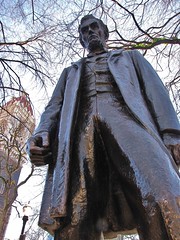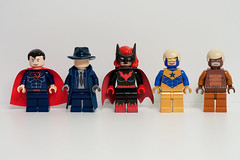Earlier this week, a guest on NPR noted that Abraham Lincoln took second (to Jesus) in the number of books written about a modern historical figure. Wow!! It’s clear that he is one of the most remembered U.S. Presidents.
The TSP Reading List suggestion for Presidents’ Day, “History, Commemoration, and Belief: Abraham Lincoln in American Memory, 1945-2001,” explores how Abraham Lincoln is remembered in the U.S. This would be a great article to assign during a unit on collective memory. Before the students read the article, have them each quickly write about how/why they remember Abraham Lincoln. Afterward, survey the class to see if they remember him as the Great Emancipator (the primary memory found in the article), the Savior of the Union, the Man of the People, the Self-Made Man, or the First Frontier American. This article would go well with Gary Alan Fine’s “Reputational Entrepreneurs and the Memory of Incompetence: Melting Supporters, Partisan Warriors, and Images of President Harding.”





